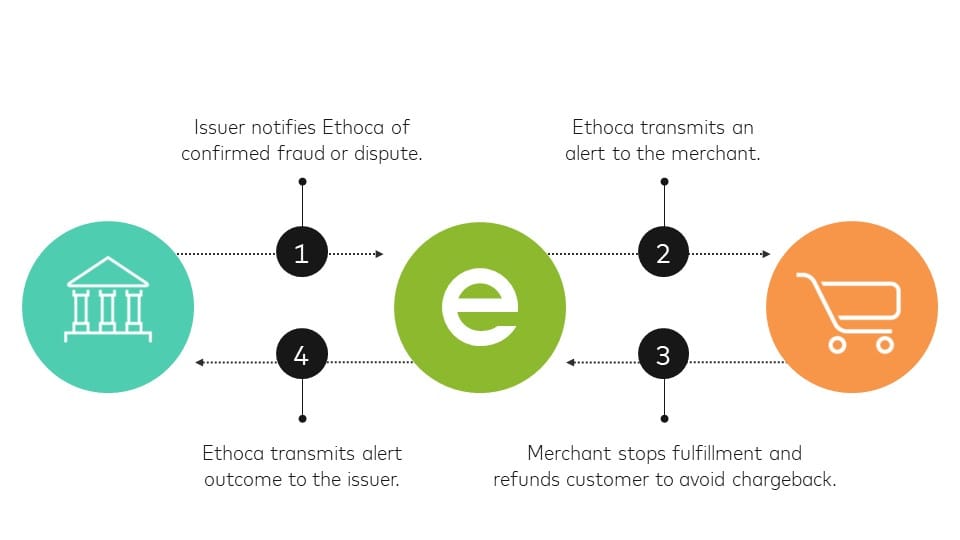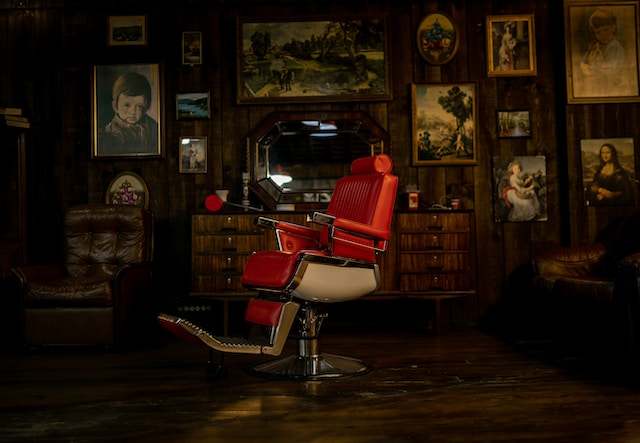
SuperPay helps cafe owners like yourself get paid as quickly as possible. Choose our platform to power your payments & billing.
The cafe industry is constantly evolving, driven by changing consumer preferences, advancements in technology, and the need for sustainability. In order to stay ahead of the game, cafe owners and industry professionals must stay informed about the latest trends shaping the future of the cafe industry.
In this blog post, we will explore the emerging trends that are set to revolutionize the cafe industry in the coming years. From the incorporation of cutting-edge technology to the growing demand for sustainable practices, we will delve into the key areas that cafe owners need to focus on to thrive in the competitive landscape.
First, we will examine the role of technology in the cafe industry, exploring the innovative tech solutions that are enhancing the cafe experience. From artificial intelligence (AI) to the Internet of Things (IoT), we will discuss how these technologies are transforming the way cafes operate and interact with customers.
Next, we will delve into the importance of sustainability in the cafe industry. With consumers becoming increasingly conscious about their environmental footprint, we will explore the sustainable practices that cafes can adopt to attract eco-conscious customers. From sourcing ethical ingredients to implementing eco-friendly packaging, we will provide insights on how cafes can incorporate sustainability into their operations.
Furthermore, we will analyze the consumer trends that are driving the future of the cafe industry. From the growing emphasis on health and wellness to the demand for personalized experiences, we will explore how cafe owners can cater to these evolving preferences to stay relevant and attract a loyal customer base.
Lastly, we will address the impact of the Covid-19 pandemic on the cafe industry and how it has accelerated certain trends. We will discuss the immediate challenges faced by cafes during the lockdowns and social distancing measures, as well as the long-term changes that are likely to shape the industry in the post-pandemic era.
By understanding and adapting to these future cafe industry trends, cafe owners can position themselves for success and ensure they stay ahead of the curve. So, let's dive into the exciting world of future cafe trends and discover the strategies and innovations that will shape the industry in the years to come.
Understanding the Current Cafe Industry Landscape
The cafe industry is a dynamic and competitive field that has experienced significant growth in recent years. Before delving into the future trends, it is essential to have a solid understanding of the current cafe industry landscape. This section will provide an overview of the current state of the industry, including market size, key players, and popular cafe concepts.
Market Size and Growth
The cafe industry has witnessed remarkable growth globally, driven by the increasing popularity of specialty coffee and the rising demand for unique cafe experiences. According to market research, the global cafe industry was valued at $XX billion in 2020 and is projected to reach $XX billion by 2027, with a compound annual growth rate (CAGR) of XX% during the forecast period.
Key Players in the Cafe Industry
The cafe industry is populated by a diverse range of players, including independent cafes, regional chains, and international coffeehouse giants. Some of the key players in the global cafe industry include:
Starbucks: With thousands of locations worldwide, Starbucks is one of the most recognizable and influential coffeehouse chains. Known for its premium coffee offerings and cozy store ambiance, Starbucks has set the benchmark for many cafe operators.
Costa Coffee: Originating in the United Kingdom, Costa Coffee has expanded its presence globally, with a strong focus on high-quality coffee and a welcoming atmosphere.
Dunkin' Donuts: Originally known for its donuts, Dunkin' Donuts has successfully transformed itself into a coffee and quick-service restaurant chain, offering a wide range of beverages and food options.
Tim Hortons: A beloved Canadian coffee chain, Tim Hortons has gained a loyal following with its affordable coffee, freshly baked goods, and iconic Timbits.
Popular Cafe Concepts
In addition to the major coffeehouse chains, the cafe industry is also characterized by a variety of unique and specialized cafe concepts. These concepts cater to specific consumer preferences and offer distinct experiences. Some popular cafe concepts include:
Third Wave Coffee Shops: Third wave coffee refers to the artisanal approach to coffee, focusing on the quality and origin of the beans, as well as the craftsmanship of the brewing process. These cafes often have a minimalist aesthetic and emphasize the unique flavors and characteristics of specialty coffee.
Organic and Farm-to-Table Cafes: These cafes prioritize using organic and locally sourced ingredients, offering customers a sustainable and environmentally conscious dining experience. They often have partnerships with local farmers and suppliers to ensure the freshness and quality of their products.
Co-Working Cafes: With the rise of remote work and the gig economy, co-working cafes have become popular among freelancers and digital nomads. These cafes provide a conducive work environment with amenities such as high-speed internet, comfortable seating, and private meeting rooms.
Specialty Tea Houses: While coffee dominates the cafe industry, specialty tea houses are gaining traction, catering to tea enthusiasts who seek unique and high-quality tea varieties. These cafes often offer a wide selection of teas from different regions, along with educational experiences on tea brewing and appreciation.
Understanding the current cafe industry landscape is crucial for cafe owners and entrepreneurs looking to enter the market or stay competitive. By being aware of the market size, key players, and popular cafe concepts, stakeholders can make informed decisions and tailor their strategies to meet the evolving demands of customers.
Emergence of Technology in the Cafe Industry
Technology has become an integral part of our daily lives, and the cafe industry is no exception. In this section, we will explore the emergence of technology in the cafe industry and how it is revolutionizing the way cafes operate and interact with customers. We will discuss the introduction of innovative tech solutions, the role of artificial intelligence (AI) and the Internet of Things (IoT), and the future tech trends that are set to shape the cafe industry.
Introduction to Cafe Tech Innovations
In recent years, the cafe industry has witnessed a wave of technological innovations aimed at enhancing the overall cafe experience. These innovations encompass various aspects of cafe operations, including customer service, ordering and payment systems, kitchen management, and more. Some of the notable tech innovations in the cafe industry include:
Mobile Ordering and Payment Apps: Mobile apps allow customers to conveniently place orders and make payments from their smartphones. This reduces wait times, enhances order accuracy, and provides a seamless and contactless experience.
Self-Service Kiosks: Self-service kiosks enable customers to place their orders and customize their meals or beverages using intuitive touch-screen interfaces. This technology not only speeds up the ordering process but also empowers customers to have more control over their choices.
Digital Menu Boards: Digital menu boards replace traditional static menus with dynamic, eye-catching displays. These boards can be easily updated to reflect changes in offerings, promotions, or pricing, providing a more engaging and visually appealing experience for customers.
Kitchen Automation Systems: Kitchen automation systems streamline the food preparation process, reducing the potential for errors and increasing efficiency. These systems can include automated order routing, inventory management, and real-time tracking of food preparation stages.
How AI and IoT are Transforming the Cafe Experience
Artificial intelligence (AI) and the Internet of Things (IoT) have emerged as key technologies transforming the cafe industry. AI enables cafes to provide personalized recommendations, automate tasks, and improve customer service. IoT connects various devices and sensors, allowing cafes to gather data and optimize operations. Some applications of AI and IoT in the cafe industry include:
Personalized Recommendations: AI algorithms analyze customer preferences and order history to provide personalized recommendations, enhancing the customer's experience and increasing sales.
Smart Inventory Management: IoT sensors can monitor inventory levels in real-time, automatically placing orders for restocking when necessary. This reduces waste, ensures availability of ingredients, and streamlines the supply chain.
Predictive Maintenance: IoT devices can monitor equipment and detect potential issues before they cause breakdowns. Predictive maintenance helps cafes avoid costly downtime and improve operational efficiency.
Customer Engagement and Loyalty Programs: AI-powered chatbots and virtual assistants can engage with customers, answer queries, and provide personalized recommendations. Additionally, AI can analyze customer data to tailor loyalty programs and promotions to individual preferences.
Future Tech Trends in the Cafe Industry
The cafe industry continues to evolve, and several tech trends are poised to shape its future. These trends include:
Robotics and Automation: The integration of robotics and automation in cafes can streamline operations, such as coffee preparation, dishwashing, and cleaning, reducing labor costs and improving efficiency.
Virtual and Augmented Reality: Virtual and augmented reality technologies have the potential to enhance the cafe experience by offering immersive environments, virtual tours, or interactive menu displays.
Contactless Technologies: In light of the Covid-19 pandemic, contactless technologies such as touchless payments, voice-activated interfaces, and facial recognition systems are likely to become more prevalent in cafes, ensuring a safe and hygienic experience for customers.
Data Analytics and Predictive Insights: Advanced data analytics tools can help cafes gain valuable insights into customer behavior, operational efficiency, and market trends. By leveraging data, cafes can make data-driven decisions and improve their overall performance.
The emergence of technology in the cafe industry presents exciting opportunities for cafe owners to enhance customer experiences, streamline operations, and stay ahead of the competition. By embracing innovative tech solutions, cafes can create a seamless and engaging environment that caters to the evolving preferences of tech-savvy customers.

Sustainability Trends in the Cafe Industry
Sustainability has become a pressing concern in various industries, including the cafe industry. In this section, we will explore the importance of sustainability in the cafe industry, the innovative sustainable practices cafes can adopt, and how cafe owners can incorporate sustainability into their operations.
Why Sustainability is Imperative for Future Cafes
The cafe industry, like many other sectors, is experiencing a growing demand for environmentally responsible practices. Customers are increasingly conscious of the impact their choices have on the planet and are seeking out businesses that align with their values. Here are some reasons why sustainability is imperative for future cafes:
Environmental Impact: The cafe industry is associated with significant environmental challenges, such as waste generation, water consumption, and carbon emissions. Embracing sustainability can help cafes minimize their environmental footprint and contribute to a healthier planet.
Customer Expectations: Modern consumers are actively seeking out businesses that prioritize sustainability. By demonstrating a commitment to eco-friendly practices, cafes can attract a larger customer base and build long-term loyalty.
Compliance and Regulations: Governments and regulatory bodies are imposing stricter environmental regulations to combat climate change and promote sustainability. Cafes that proactively adopt sustainable practices will be better positioned to comply with these regulations and avoid potential penalties.
Innovative Sustainable Practices in Cafes
Cafes have the opportunity to make a positive impact on the environment by implementing innovative sustainable practices. Here are some examples of sustainable initiatives that cafes can adopt:
Ethical Sourcing: Cafes can prioritize sourcing ethically produced and fair-trade coffee beans, tea leaves, and other ingredients. This ensures that farmers and workers are paid fair wages and are treated with respect.
Waste Reduction and Recycling: Implementing waste reduction strategies, such as composting organic waste and implementing recycling programs for packaging materials, can significantly reduce the environmental impact of cafes.
Energy Efficiency: Cafes can invest in energy-efficient equipment, such as energy-saving coffee machines and LED lighting, to reduce energy consumption and lower their carbon footprint.
Sustainable Packaging: Switching to eco-friendly packaging materials, such as biodegradable or compostable takeaway cups and utensils, can help cafes minimize their contribution to plastic waste.
How to Incorporate Sustainability in Your Cafe
Integrating sustainability into cafe operations requires a comprehensive approach. Here are some steps cafe owners can take to incorporate sustainability:
Conduct a Sustainability Audit: Assess the current environmental impact of your cafe by conducting a thorough sustainability audit. Identify areas where improvements can be made and set goals for reducing waste, energy consumption, and water usage.
Educate Staff and Customers: Train your staff on sustainable practices and provide them with the tools and resources to implement these practices effectively. Educate customers about your sustainability initiatives and encourage their participation.
Source Responsibly: Partner with suppliers who prioritize sustainability and offer ethically sourced products. Communicate your commitment to sustainable sourcing to customers, highlighting the positive impact of their choices.
Implement Waste Management Systems: Establish effective waste management systems, including recycling bins, composting bins, and clear signage to guide customers on proper waste disposal.
Engage in Community Initiatives: Get involved in local sustainability initiatives and collaborate with other businesses or organizations to promote sustainable practices within the community.
By incorporating sustainability into their operations, cafes can demonstrate their commitment to environmental responsibility, attract environmentally conscious customers, and contribute to a more sustainable future for the cafe industry as a whole.
Consumer Trends Shaping the Future of the Cafe Industry
Consumer preferences and behaviors play a crucial role in shaping the future of the cafe industry. In this section, we will explore the key consumer trends that cafe owners need to be aware of in order to stay relevant and meet the evolving demands of their customers. We will discuss the shift towards health and wellness, the demand for personalized cafe experiences, and the rise of the 'Grab and Go' culture.
Shift Towards Health and Wellness
In recent years, there has been a significant shift in consumer preferences towards healthier food and beverage options. This trend is driven by a growing awareness of the importance of a balanced lifestyle and the desire to make conscious choices for better well-being. Here are some ways cafes can cater to this health-conscious consumer trend:
Offer Healthy Menu Alternatives: Incorporate nutritious options, such as plant-based food and beverages, gluten-free options, and low-sugar alternatives. Provide clear nutritional information to empower customers to make informed choices.
Emphasize Fresh and Locally Sourced Ingredients: Highlight the use of fresh, seasonal, and locally sourced ingredients in your menu. This not only promotes healthier choices but also supports local farmers and reduces carbon footprint.
Provide Nutritional Education: Educate customers about the nutritional benefits of different menu items and the positive impact of healthy eating on overall well-being. Consider offering workshops or informative resources on topics like mindful eating or healthy cooking.
Demand for Personalized Cafe Experience
Consumers now expect customized experiences that cater to their individual preferences and tastes. This trend is fueled by the desire for unique and tailored experiences that make them feel valued. Here are some ways cafes can meet the demand for personalized experiences:
Customization Options: Provide customers with the ability to customize their orders, such as choosing the type of milk, sweeteners, or toppings for their beverages. This allows customers to create their perfect drink or meal.
Loyalty Programs: Implement loyalty programs that reward customers for their repeat business. Offer personalized incentives, exclusive discounts, or special promotions based on individual preferences and purchase history.
Engage with Customers: Actively engage with customers through social media, email newsletters, or feedback surveys to gather insights about their preferences and expectations. Use this information to tailor offerings and create personalized experiences.
Rise of the 'Grab and Go' Culture
The fast-paced lifestyles of modern consumers have led to the rise of the 'Grab and Go' culture, where convenience and efficiency are paramount. Cafe owners can tap into this trend by providing quick and accessible options for on-the-go customers. Here are some strategies to cater to the 'Grab and Go' culture:
Streamlined Ordering Process: Optimize your ordering system to minimize waiting times, whether it's through mobile ordering apps, self-service kiosks, or dedicated 'Grab and Go' counters.
Ready-to-Go Food and Beverage Options: Offer a selection of pre-packaged, ready-to-go food and beverages that customers can quickly grab and enjoy. Consider including healthy options like salads, sandwiches, or protein bars.
Convenient Packaging: Use eco-friendly and convenient packaging that is easy to carry and consume on the go. Consider sustainable materials and designs that prioritize portability and minimize waste.
By understanding and adapting to the consumer trends shaping the cafe industry, cafe owners can create a customer-centric experience that resonates with their target audience. By incorporating health and wellness options, providing personalized experiences, and catering to the 'Grab and Go' culture, cafes can stay ahead of the competition and meet the evolving demands of their customers.
Covid-19 Impact and the Evolution of Cafe Industry
The Covid-19 pandemic has had a profound impact on the cafe industry, forcing businesses to adapt and evolve in order to survive. In this section, we will discuss the immediate impact of Covid-19 on cafes, the long-term changes brought by the pandemic, and the predictions for the future of the cafe industry in the post-Covid era.
Immediate Impact of Covid-19 on Cafes
When the Covid-19 pandemic hit, cafes faced immediate challenges due to lockdowns, social distancing measures, and changes in consumer behavior. Here are some of the immediate impacts on cafes:
Closure and Loss of Revenue: Cafes around the world were forced to close their doors temporarily, leading to significant financial losses and uncertainty.
Shift to Takeaway and Delivery: Cafes had to quickly adapt their operations to focus on takeaway and delivery services to continue serving customers during the lockdowns.
Health and Safety Measures: Cafes implemented strict health and safety protocols, such as enhanced cleaning procedures, contactless payments, and social distancing measures, to ensure the safety of staff and customers.
Long-Term Changes Brought by the Pandemic
The Covid-19 pandemic has brought about long-term changes that are likely to shape the cafe industry even after the pandemic subsides. Here are some of the lasting effects:
Emphasis on Hygiene and Safety: Consumers will continue to prioritize hygiene and safety when choosing cafes. Cafes need to maintain rigorous cleanliness standards and communicate their safety measures to build trust with customers.
Continued Demand for Takeaway and Delivery: The convenience of takeaway and delivery services has become ingrained in consumer behavior. Cafes should continue to offer these options even as dine-in services resume.
Digital Transformation: The pandemic accelerated the adoption of digital technologies in the cafe industry. Online ordering, contactless payments, and digital menu boards will remain important tools for cafes to enhance customer experiences and streamline operations.
Post-Covid Predictions for the Cafe Industry
While the full extent of the post-Covid landscape remains uncertain, several predictions can be made regarding the future of the cafe industry. Here are some post-Covid predictions:
Hybrid Models: Cafes may adopt hybrid models that blend in-person dining with takeaway and delivery services to cater to different customer preferences and ensure business resilience.
Flexible Workspaces: With the rise of remote work, cafes may evolve to offer flexible workspaces that provide a productive environment for digital nomads and freelancers, along with quality food and beverages.
Focus on Local and Community Engagement: Cafes will likely strengthen their ties with the local community, supporting local suppliers, participating in community initiatives, and creating spaces that foster a sense of belonging.
Enhanced Digital Experiences: Digital experiences, such as virtual events, online classes, and interactive platforms, may become a regular part of cafe offerings, allowing cafes to engage with customers beyond the physical space.
The Covid-19 pandemic has undoubtedly reshaped the cafe industry, prompting cafes to adapt, innovate, and prioritize health and safety. By embracing these changes and staying agile, cafes can navigate the evolving landscape and emerge stronger in the post-Covid era.


